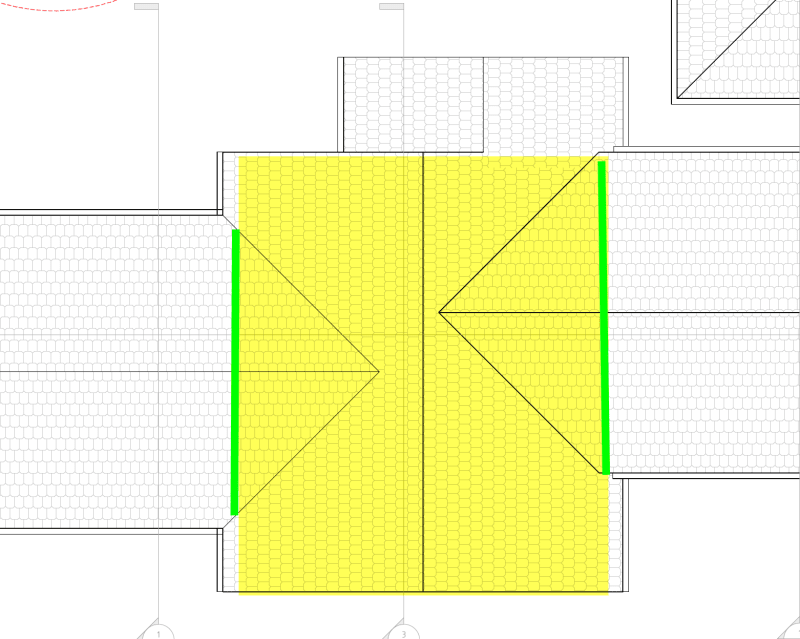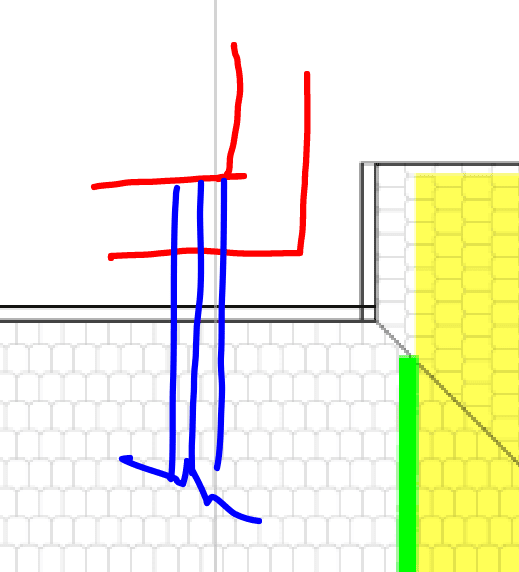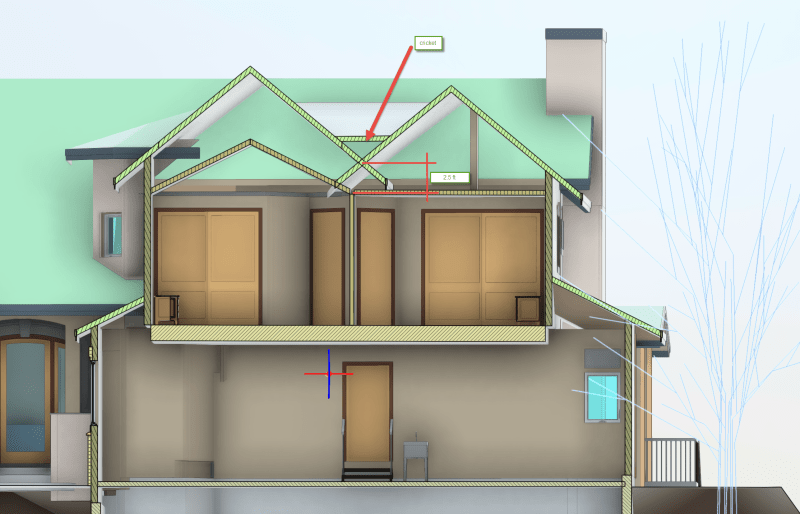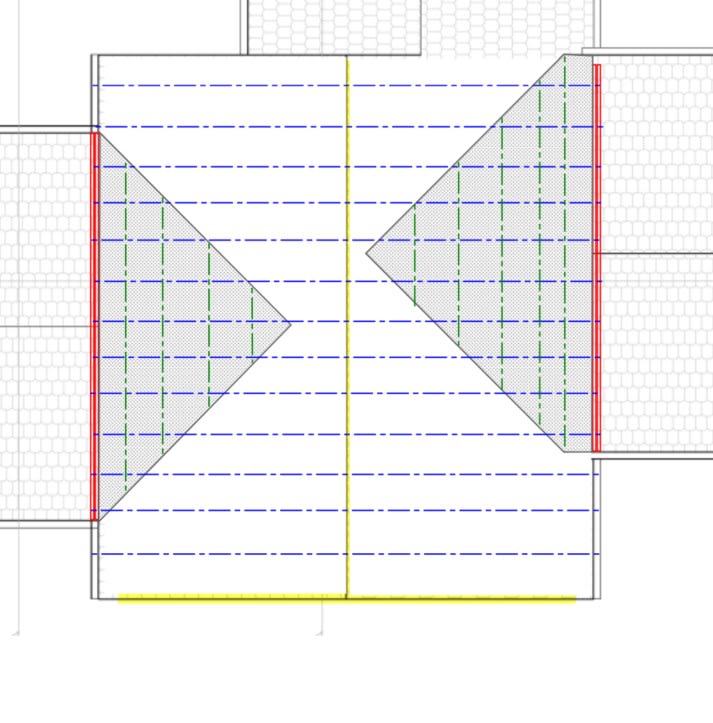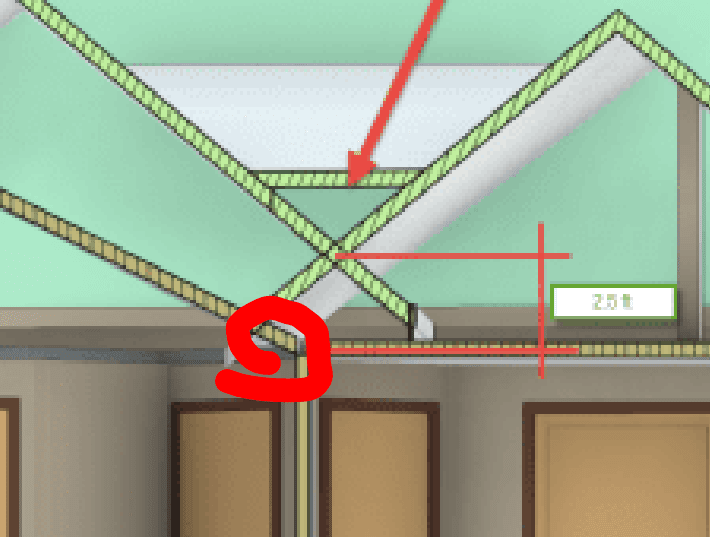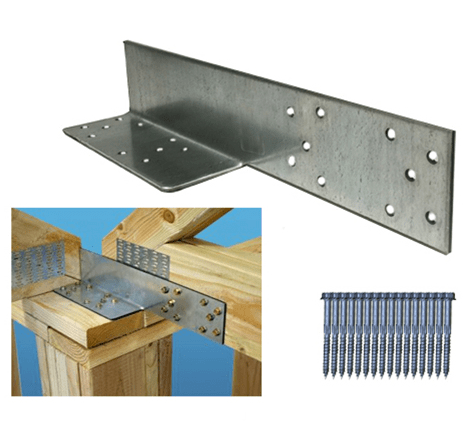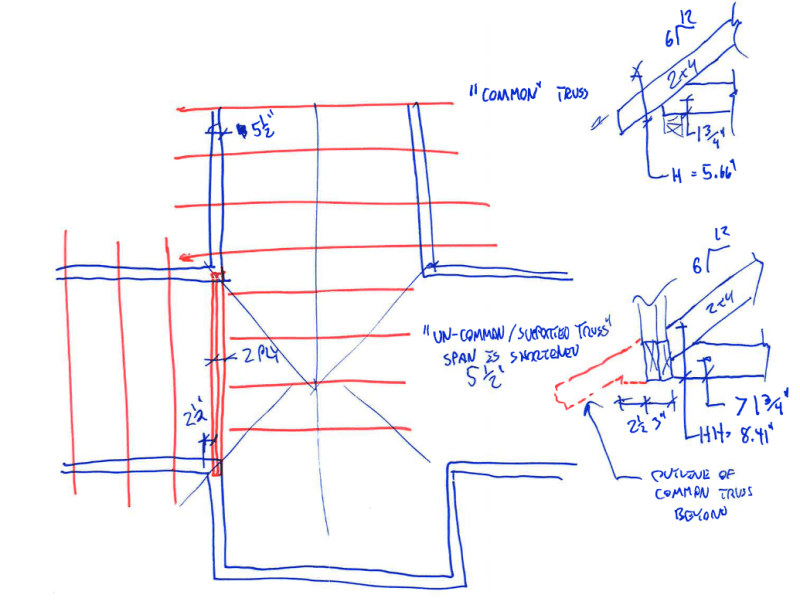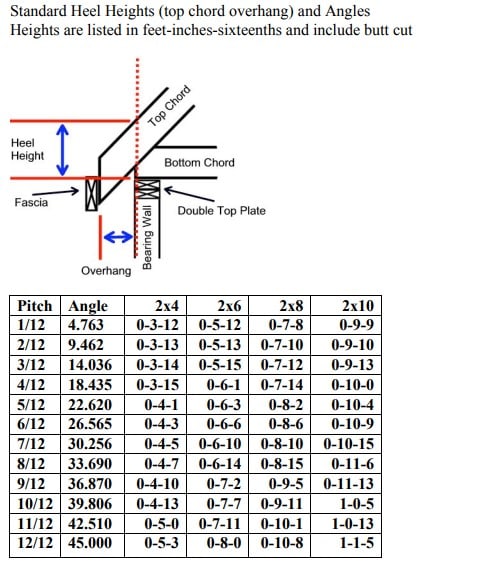OP said:
I feel like the architect didn't really think about the benefits of trusses which essentially spanning from exterior to exterior walls.
I agree. This has the feel of an architect who is not particularly adept at establishing roof and ceiling planes that jive with traditional, stick built framing schemes which I feel is the key to competence in this arena. Clients... am I right??
OP said:
Can they do a girder truss? Or do I need to specify a beam and the trusses have to hang from the side of the beam?
This one would be a beam condition for me. Or, with that 2.5' depth, perhaps a flat girder truss.
I would shy away from using a girder truss that protrudes into the valley over framing for a couple of reasons:
1) It would put the compression chord of that girder up at the valley framing sheathing level. I'm skeptical that the valley sheathing would be installed in such a way that it would convincingly brace the top chord of the girder without some unconventional detailing and construction up there.
2) A girder that protrudes though the primary sheathing would interrupt the diaphragm shear load path. You could detail something fancy to move the diaphragm shear across the girder but, again, you'd be asking for something "weird" looking.
Assuming that your beam would be located above the partition wall, you may have a spatial problem with the heel of your scissor trusses at the location shown below. The girder would cut into the bearing length of the scissor which normally wants to have the bottom chord soffit touch down at the face of the stud wall. Possible solutions:
a) Talk your architect into a coffer at the bearing to allow for the requisite "flat spot". Unlikely.
b) Raise your scissor bottom chord up and then frame it back town to the ceiling with false framing, either stick built or built into the truss.
b)
